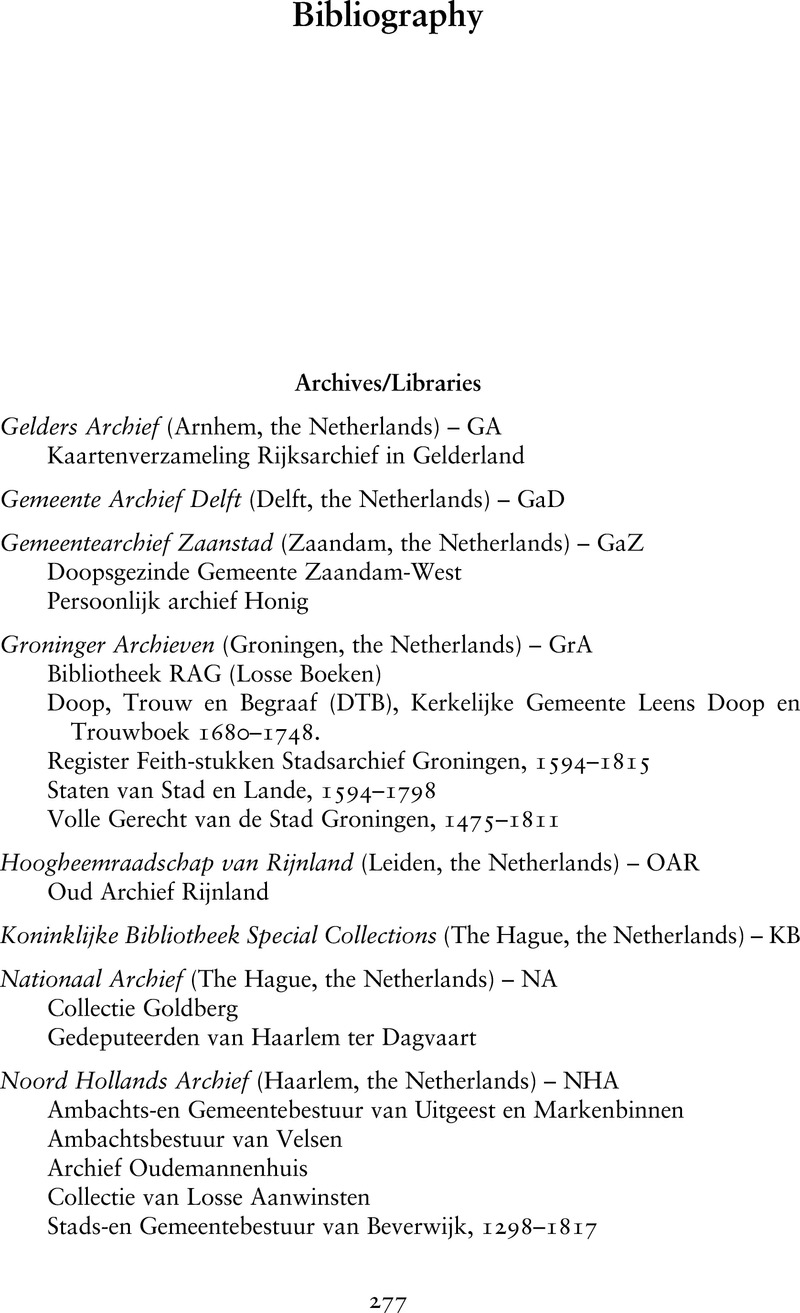Book contents
- Natural Disaster at the Closing of the Dutch Golden Age
- Studies in Environment and History
- Natural Disaster at the Closing of the Dutch Golden Age
- Copyright page
- Dedication
- Contents
- Figures
- Acknowledgments
- Introduction
- 1 Rampjaar Reconsidered
- 2 “Disasters in the Year of Peace”
- 3 “The Fattened Land Turned to Salted Ground”
- 4 A Plague from the Sea
- 5 “Increasingly Numerous and Higher Floods”
- 6 “From a Love of Humanity and Comfort for the Fatherland”
- 7 The Twin Faces of Calamity
- Bibliography
- Index
- References
Bibliography
Published online by Cambridge University Press: 13 January 2022
- Natural Disaster at the Closing of the Dutch Golden Age
- Studies in Environment and History
- Natural Disaster at the Closing of the Dutch Golden Age
- Copyright page
- Dedication
- Contents
- Figures
- Acknowledgments
- Introduction
- 1 Rampjaar Reconsidered
- 2 “Disasters in the Year of Peace”
- 3 “The Fattened Land Turned to Salted Ground”
- 4 A Plague from the Sea
- 5 “Increasingly Numerous and Higher Floods”
- 6 “From a Love of Humanity and Comfort for the Fatherland”
- 7 The Twin Faces of Calamity
- Bibliography
- Index
- References
Summary

- Type
- Chapter
- Information
- Natural Disaster at the Closing of the Dutch Golden Age , pp. 277 - 324Publisher: Cambridge University PressPrint publication year: 2022

